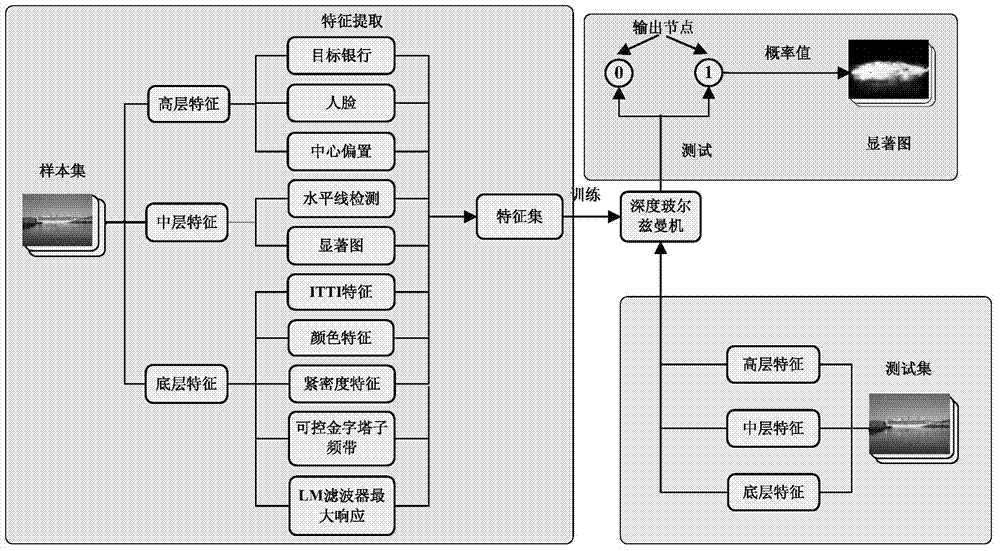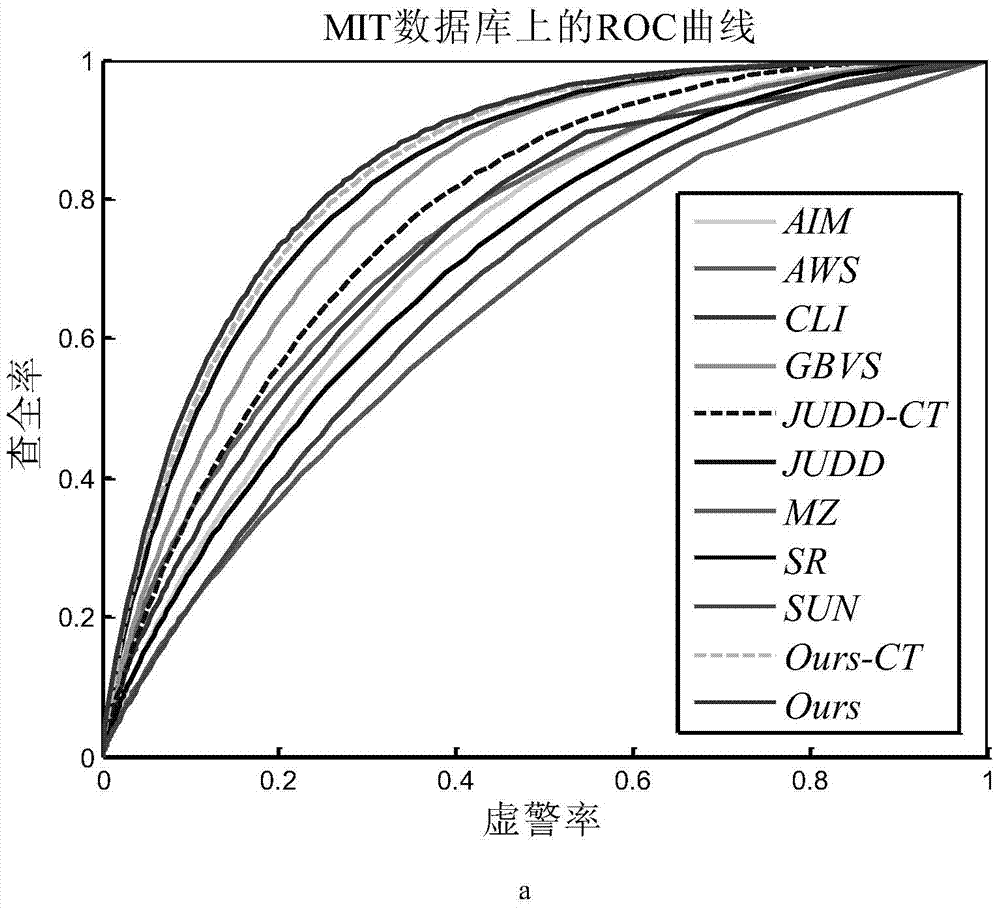Depth study based method for detecting salient regions in natural image
A technology of deep learning and detection method, which is applied in the direction of instruments, character and pattern recognition, computer components, etc., can solve the problems of poor detection effect in significant areas, and achieve high discrimination, robustness, and high detection accuracy
- Summary
- Abstract
- Description
- Claims
- Application Information
AI Technical Summary
Problems solved by technology
Method used
Image
Examples
Embodiment Construction
[0043] Now in conjunction with embodiment, accompanying drawing, the present invention will be further described:
[0044] The hardware environment used for implementation is: Intel Pentium2.93GHz CPU computer, 4.0GB memory, and the running software environment is: Matlab R2011b and Windows7. We use the MIT and Toronto databases published on the Internet to conduct our experiments. The MIT database contains 1003 natural images, and the Toronto database contains 120 images. We have realized the method that the present invention proposes with Matlab software.
[0045] The present invention is specifically implemented as follows:
[0046] Step 1 extracts the visual features of the image data:
[0047] The present invention uses cross-validation to select 903 images each time (the last time is 900 images) for training, and uses the remaining images for testing. First, extract 37-dimensional features from each picture in the training set. The following describes the extraction m...
PUM
 Login to View More
Login to View More Abstract
Description
Claims
Application Information
 Login to View More
Login to View More - R&D
- Intellectual Property
- Life Sciences
- Materials
- Tech Scout
- Unparalleled Data Quality
- Higher Quality Content
- 60% Fewer Hallucinations
Browse by: Latest US Patents, China's latest patents, Technical Efficacy Thesaurus, Application Domain, Technology Topic, Popular Technical Reports.
© 2025 PatSnap. All rights reserved.Legal|Privacy policy|Modern Slavery Act Transparency Statement|Sitemap|About US| Contact US: help@patsnap.com



